Posts Tagged ‘Fly Fishing’
Winter Fly Fishing: Find Success
Winter Fly Fishing: Tips and Techniques for Success in Cold Weather
Winter fly fishing can be a rewarding yet challenging experience. While many anglers put away their gear when the weather turns cold, winter offers a unique opportunity to catch fish in peaceful, serene settings. With fewer anglers around, you’ll have quiet, undisturbed waters to explore, and fish can often be more active in the cooler months. However, to be successful, you’ll need to adjust your strategies to deal with the lower temperatures and slower conditions.
Here’s how to make the most of your winter fly fishing adventures:
1. Bring Layers
The key to staying comfortable while winter fly fishing is proper clothing. In the cold, you need to stay warm without restricting movement. Start with moisture-wicking base layers to keep sweat off your skin. Follow this with insulating layers, such as fleece or wool, and top it off with a waterproof, windproof outer layer. Wool layers are our preferred base layer. Typically wool will retain heat better than other materials when wet.
Make sure you have thick socks, after all you are going to be standing in the water and your toes get cold quick. For your hands, fingerless gloves or glove liners will help keep your dexterity while allowing warmth. A well-insulated hat, such as a beanie or fleece-lined cap, will also keep heat from escaping through your head.
Pro Tip: Keep extra layers in your car incase you take a spill
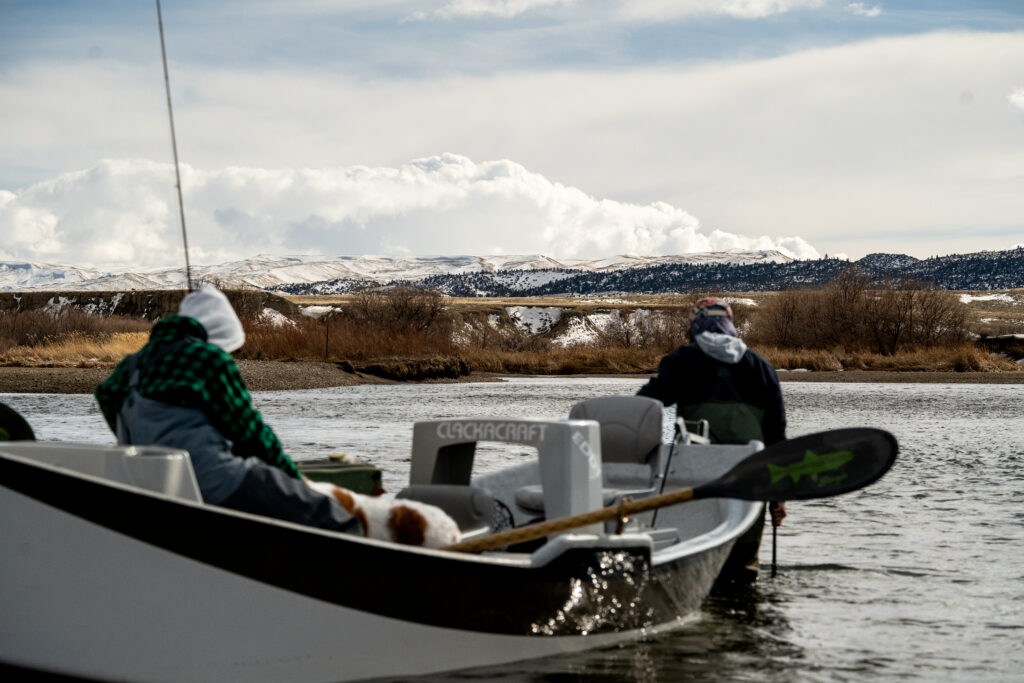
2. Timing Is Key: Fish During the Warmest Parts of the Day
During the winter months, fish metabolism slows down, and they become less active. This means that you’ll need to target them during the warmer parts of the day, typically between late morning and early afternoon. The water temperature is usually higher at this time, making fish more likely to feed. With the colder water temperatures fish tend to want easy meals so a good drift and the correct depth is crucial. Work deeper water and slower-moving areas of the water where they can conserve energy. Pools, deep runs, or areas with structure like submerged rocks or logs can hold fish even in colder weather.
3. Adapt Your Fly Patterns
When fly fishing in winter, it’s important to adjust your fly selection. Cold water generally means slower metabolisms for fish, and they will be less willing to chase down fast-moving flies. Focus on offering flies that move slowly or remain stationary in the water. Fly sizes depends on the type of fishing you are doing but it is a good rule of thumb to fish smaller bugs in the winter and larger bugs in the summer. Midges and beatis tend to be a good choice in the winter. Bugs typically are a little darker in the winter than the summer months. Not to mention it can be cloudy in the winter and darker bugs tend to create a better profile.
Fishing streamers in the winter requires a slow approach to mimic the movement of struggling prey in cold water. During these months, fish are less active and more lethargic, so it’s important to focus on a slow retrieve that entices fish without triggering a chase response. To effectively fish streamers in winter, cast your fly across the current and let it swing naturally, allowing it to drift along with the water’s flow. If stripping the streamer, use long, slow pulls, keeping the fly near the bottom or close to structure where fish tend to congregate. Darker colors like black, olive, and brown are most visible in low-light conditions, and subtle movements will often yield the best results, as fish are more cautious and less aggressive in the cold.
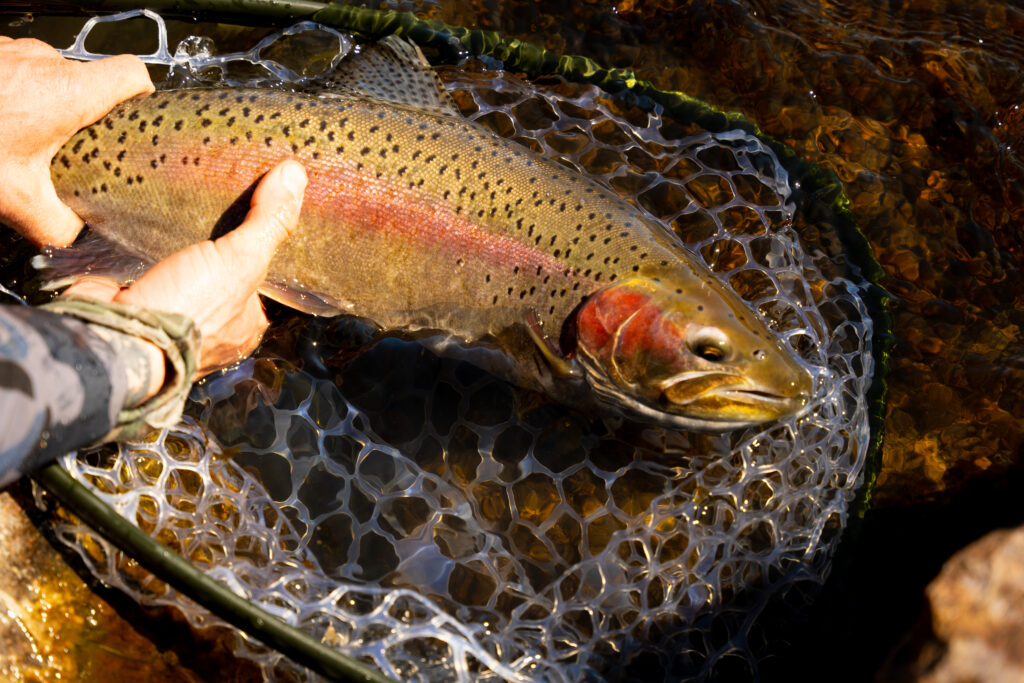
4. Techniques for Winter Fly Fishing
Fishing in winter requires patience and a slightly different approach than in warmer months. Here are some techniques to improve your chances:
- Slow Down Your Presentation: In cold water, fish are less likely to chase a fast-moving fly. Try dead drifting your flies for long periods and focus on slow, deliberate retrieves when using streamers.
- Use a Long Drift: Take advantage of the winter stillness by casting your nymphs or midges upstream and allowing them to drift naturally with the current. Try to keep your line taut so you can detect subtle bites.
- Swinging Streamers: When fishing streamers, a slow and steady retrieve can be effective. Consider swinging your streamer across the current or slowly stripping it back to you. This mimics the movement of struggling prey, enticing the fish to strike.
- Watch for Subtle Bites: During winter, strikes can be soft, and fish are often reluctant to make big moves. Be attentive and try to feel for any subtle tugs on your line. Setting the hook too soon or too hard could result in missing the fish.
5. The Quiet Beauty of Winter Fly Fishing
One of the most enjoyable aspects of winter fly fishing is the peacefulness that comes with it. With fewer anglers around, the landscapes are often breathtakingly still, and the waters are tranquil. The crisp air, the sound of the river, and the solitude can make your time on the water more than just a fishing trip—it can be a moment of connection with nature. Remember to be patient, stay safe, and embrace the challenges that winter fly fishing presents.
Reading Water: How to Fly Fish
Reading water is essential for successful fly fishing, as it helps you understand where fish are likely to be holding and feeding. Here are some tips and tricks to help you read water effectively:
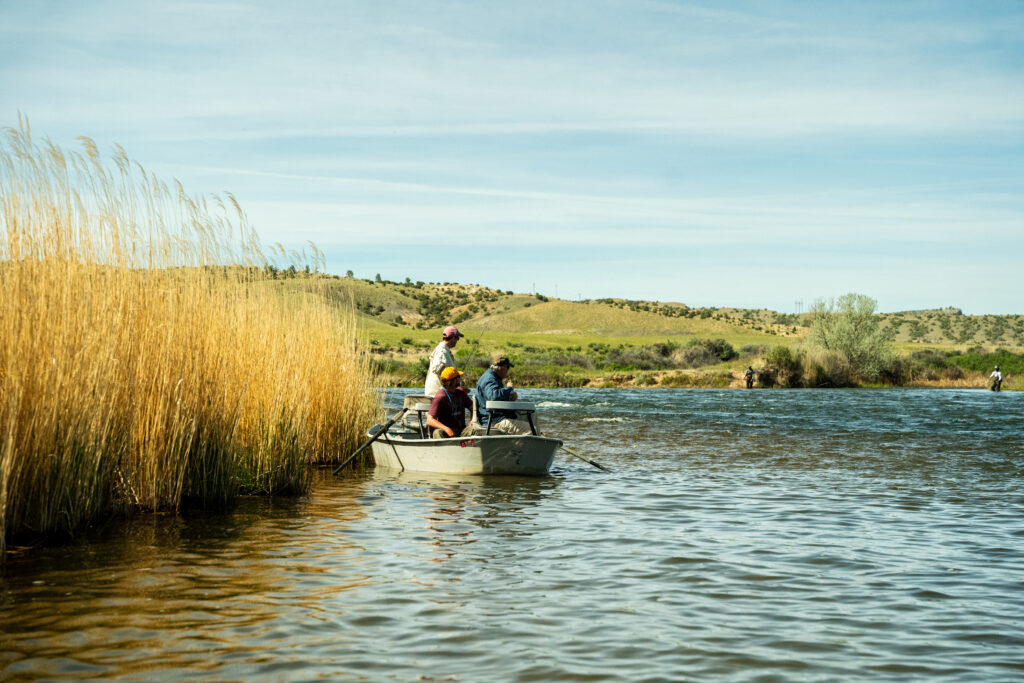
1. Observe the Surface: Look for any disturbances on the surface of the water, such as rises, swirls, or dimples, which indicate the presence of feeding fish.
2. Water Depth: Different fish species prefer different depths of water. Trout, for example, often inhabit riffles, runs, and pools, while bass may prefer deeper pools or structure.
3. Current Breaks: Fish seek refuge from the strong current in areas where the water slows down or changes direction. Look for pockets behind rocks, along the banks, or near submerged logs.
4. Eddies and Back Eddies: These are areas of water where the current spins back on itself. Fish often hang out in these calmer areas, especially if there’s food drifting by.
5. Undercut Banks: Banks that have been eroded by the current often create pockets of deeper water where fish can hide. Casting close to these banks can be productive.
6. Seams: A seam is the line where two different currents meet. Trout, in particular, like to position themselves where they have easy access to both fast and slow-moving water. These areas are often rich feeding grounds.
7. Riffles: Riffles are shallow, fast-moving stretches of water typically found over gravel beds. They oxygenate the water and provide cover for fish. Trout often hold in the softer water at the edges of riffles, where they can feed more comfortably.
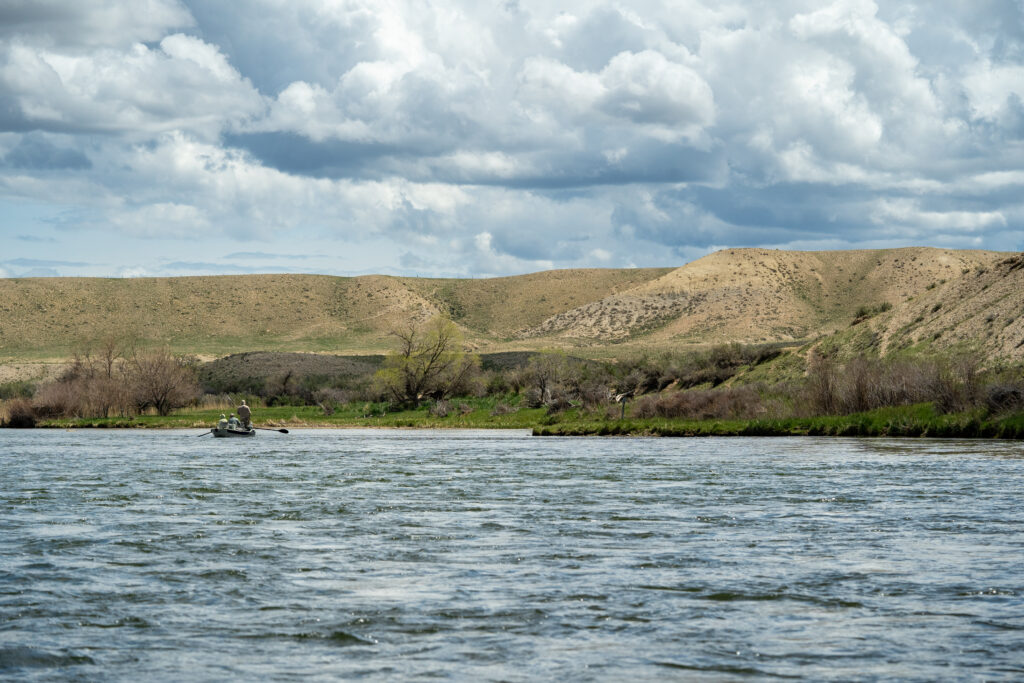
8. Pools: Pools are deeper, slower-moving sections of water often found below riffles. They provide fish with a resting place and are prime feeding spots, especially during warmer weather.
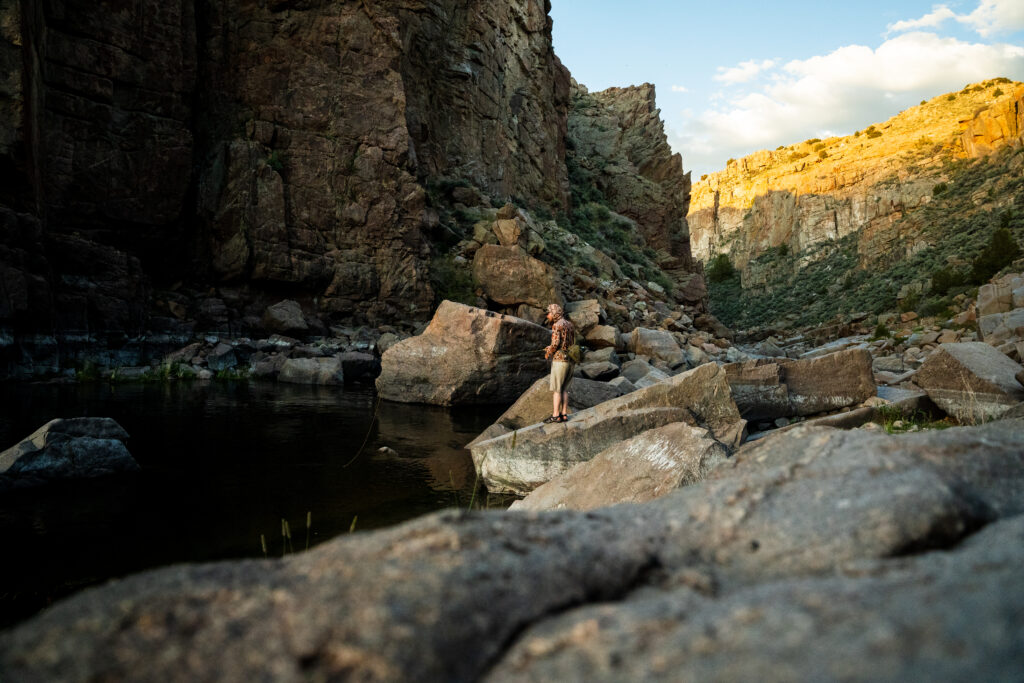
9. Structure: Look for underwater structure such as logs, rocks, or submerged vegetation. These provide cover for fish and attract prey.
10. Shadows: Pay attention to the shadows cast by trees, rocks, or other objects. Fish may be more comfortable and active in shaded areas, especially on sunny days.
11. Temperature: Fish are sensitive to water temperature. In warmer weather, they may seek cooler, deeper water, while in cooler weather, they may move to shallower areas where the sun warms the water.
9. Structure: Look for underwater structure such as logs, rocks, or submerged vegetation. These provide cover for fish and attract prey.
12. Wind: Wind can push food to certain areas of the water, concentrating fish in those spots. Additionally, wind-driven waves can create oxygenation and cover noise, making fish less wary.
Remember, reading water is as much an art as it is a science, and it takes time and experience to become proficient. Pay close attention to the water and the behavior of fish, and don’t be afraid to experiment with different techniques and locations.
Fly Fishing: The Midge Life Cycle
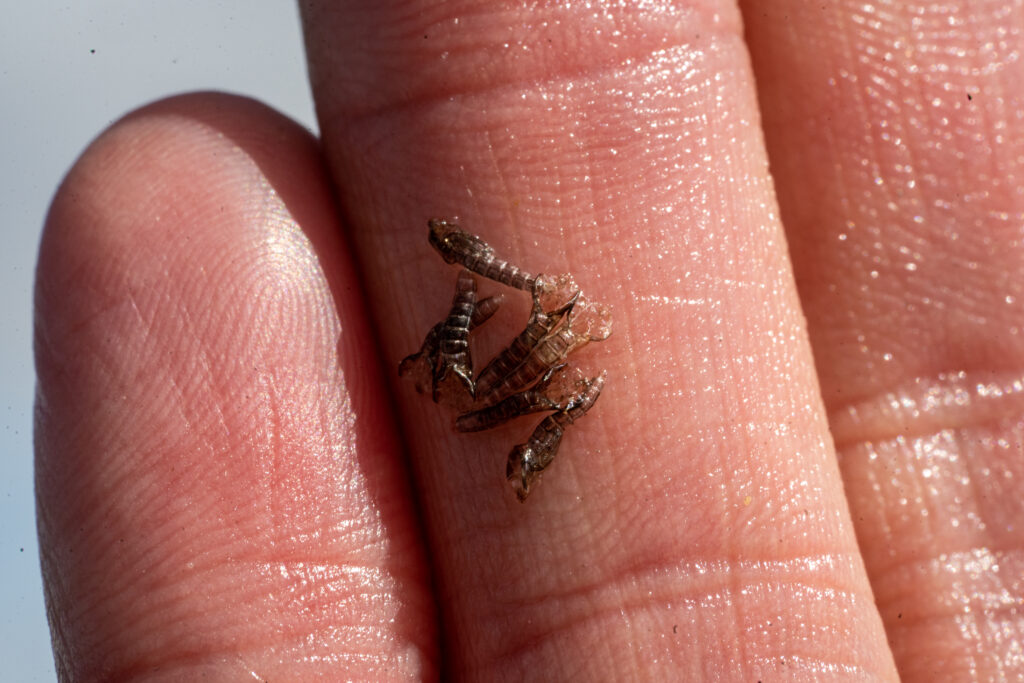
Photo by: River Ambassadors Media
Understanding the midge life cycle can be crucial to catching more fish. Not only are midges in just about every water source they are a large part of a trout’s diet. They are hatching year round and understanding the midge can really up your fly fishing game.
1. Egg Stage:
The life cycle of a midge begins with the laying of eggs. Female midges typically lay their eggs in water or damp soil, often near a water source like ponds, lakes, or marshes. These eggs are tiny and often laid in clusters. Depending on the species, the number of eggs laid can vary greatly.
2. Larval Stage:
Once the eggs hatch, they enter the larval stage. Midge larvae, also known as bloodworms, are aquatic and live in freshwater environments. They feed on organic matter, algae, and microorganisms found in the water. Larvae play a vital role in freshwater ecosystems as decomposers, breaking down organic material and helping to recycle nutrients. The best bug to throw when they are in this stage is a Zebra Midge. To help figure out what color to tie on flip some rocks and be observant of the bugs flying around you.
3. Pupal Stage:
After a period of growth and development, midge larvae enter the pupal stage. During this stage, the larvae undergo metamorphosis, transforming into adult midges. Pupae are typically found in the water, often in silken cocoons attached to submerged vegetation or other structures. This stage can last anywhere from a few days to several weeks, depending on environmental conditions. We like to use a WD-40 and or a Midge with a glass bead. When midges emerge they create an air bubble that they can ride to the top and begin spreading their wings to fly.
4. Adult Stage:
Once the metamorphosis is complete, adult midges emerge from their pupal cases and rise to the water’s surface. Unlike mosquitoes, which also undergo aquatic development, midges do not bite as adults. Instead, their primary focus is reproduction. Adult midges have short lifespans, usually only a few days to a couple of weeks, during which they mate and lay eggs, thus completing the life cycle. This one be tricky sometimes but when you see a pod of fish rising throw on a small Adams Parachute, Griffith Gnat or small dry. Dip it in your liquid High N Dry Flotant and brush with our powder floatant to keep that small bug up top.
5. Environmental Impact:
Midges play important roles in aquatic ecosystems. As larvae, they contribute to nutrient cycling by breaking down organic matter. Additionally, midge larvae serve as a food source for various aquatic organisms, including fish, amphibians, and insects. However, large swarms of adult midges can be a nuisance to humans, especially in areas near water.
